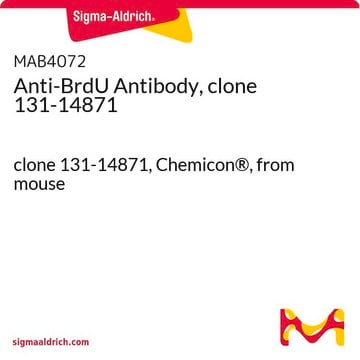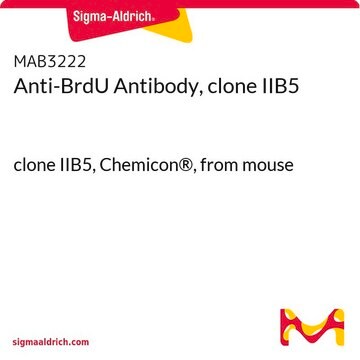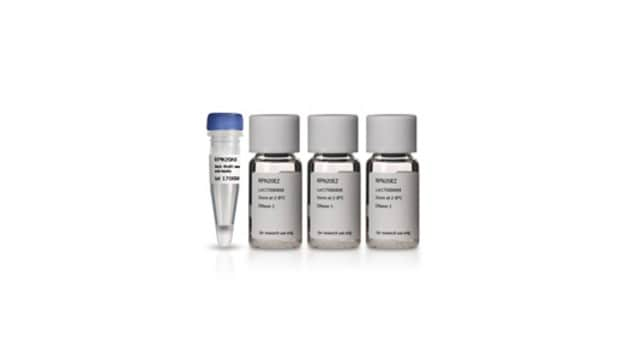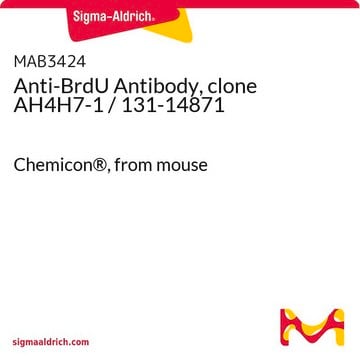MAB3510
Anti-BrdU Antibody, clone BU-1
culture supernatant, clone BU-1, Chemicon®
Sinónimos:
BrdU
About This Item
Productos recomendados
origen biológico
mouse
Nivel de calidad
forma del anticuerpo
culture supernatant
tipo de anticuerpo
primary antibodies
clon
BU-1, monoclonal
reactividad de especies (predicha por homología)
all
fabricante / nombre comercial
Chemicon®
técnicas
flow cytometry: suitable
immunocytochemistry: suitable
immunohistochemistry: suitable
isotipo
IgG2a
Condiciones de envío
wet ice
modificación del objetivo postraduccional
unmodified
Descripción general
Especificidad
Inmunógeno
Aplicación
Epigenetics & Nuclear Function
Cell Cycle, DNA Replication & Repair
Forma física
Almacenamiento y estabilidad
Nota de análisis
Brdu treated cells
Otras notas
Información legal
Cláusula de descargo de responsabilidad
Not finding the right product?
Try our Herramienta de selección de productos.
Código de clase de almacenamiento
10 - Combustible liquids
Clase de riesgo para el agua (WGK)
WGK 1
Punto de inflamabilidad (°F)
Not applicable
Punto de inflamabilidad (°C)
Not applicable
Certificados de análisis (COA)
Busque Certificados de análisis (COA) introduciendo el número de lote del producto. Los números de lote se encuentran en la etiqueta del producto después de las palabras «Lot» o «Batch»
¿Ya tiene este producto?
Encuentre la documentación para los productos que ha comprado recientemente en la Biblioteca de documentos.
Los clientes también vieron
Nuestro equipo de científicos tiene experiencia en todas las áreas de investigación: Ciencias de la vida, Ciencia de los materiales, Síntesis química, Cromatografía, Analítica y muchas otras.
Póngase en contacto con el Servicio técnico








